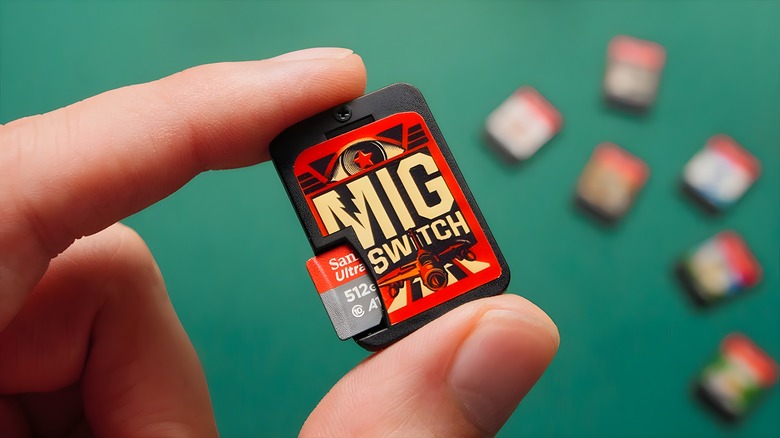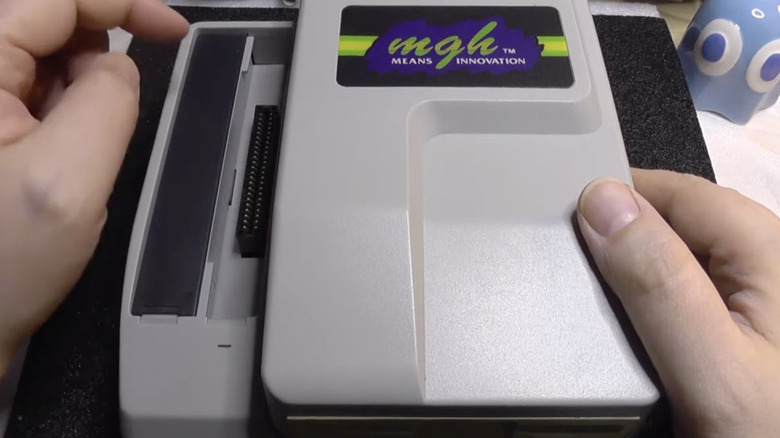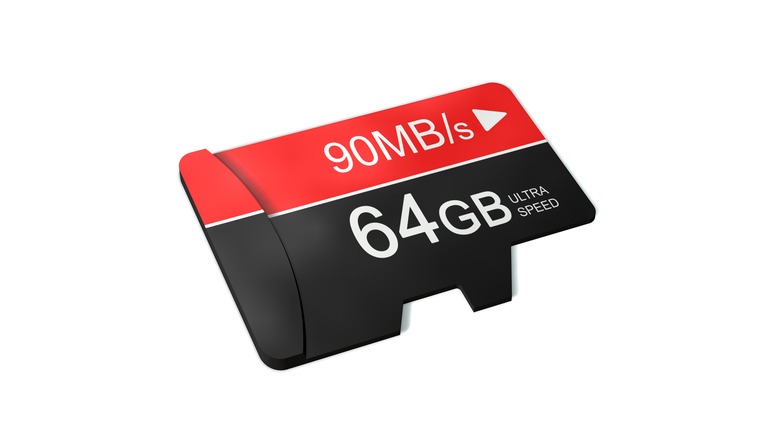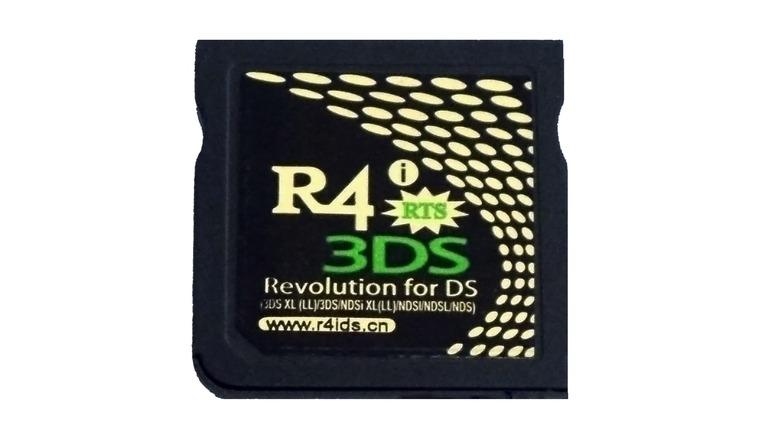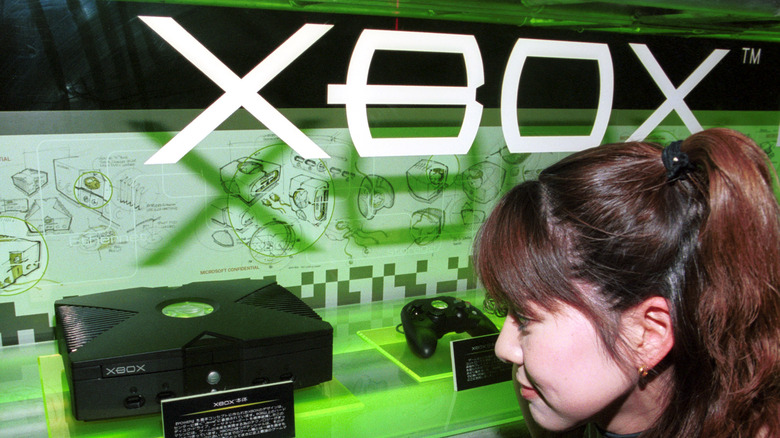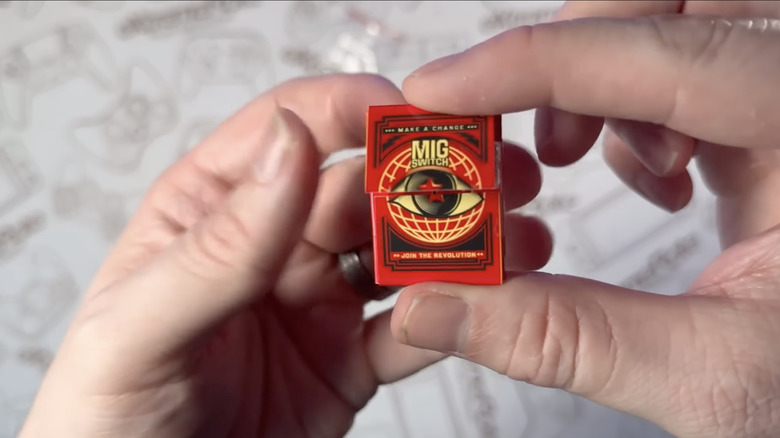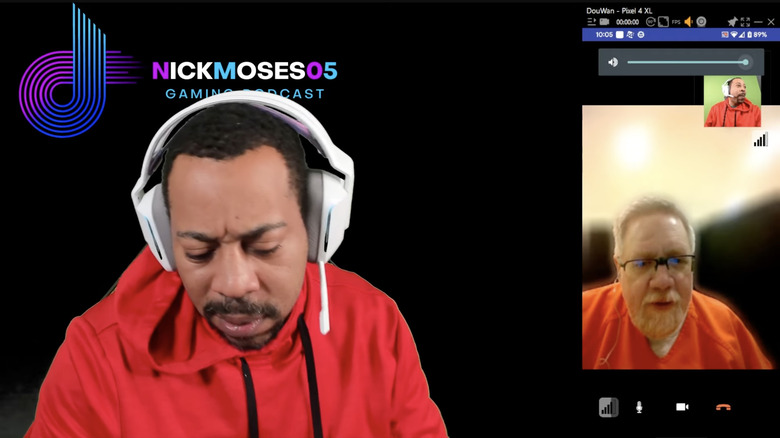The History Of Nintendo Flash Carts And The Big Mystery Behind MIG-Switch
Around the turn of the new year, when 2023 became 2024, the video game community was blindsided by the release of the MIG-Switch, a flash cart for the Nintendo Switch that can run downloaded games on any iteration of the console, regardless of hardware or firmware changes. This raised all sorts of questions.
For starters, why now? Flash carts — specialized flash memory cards that run preloaded programs on cartridge-based game systems, potentially including pirated material — take time and effort to create, and the Switch is nearing the end of its product lifespan. Who's behind it? Details are scarce, given the understandable secrecy around what is fundamentally a copy protection circumvention device. Team Xecuter, a notorious crew of console modders already rumored to be involved, had been dormant after criminal and civil legal trouble a few years ago. Was this signaling their return? Was it a coincidence that Gary Bowser, the only team member of Team Xecuter to serve prison time, had been released a few months earlier?
To understand what is or isn't happening with the MIG-Switch, we need to look at the history of flash carts and the larger ROM dumping/emulation ecosystem. Read on to take a trip through time.
Rise of console and handheld game copying
Though console video game backup devices and the concept of dumping ROMs — copying the contents of a cartridge to a computer storage medium as a ROM file — go back to at least the early 1990s, they weren't exactly well-known at first. Aside from occasional advertisements snuck into mainstream video game magazines like Gamepro, it's not like they were easy to learn about. But with the internet boom of the mid-to-late '90s came emulators, computer programs that, well, emulated console and arcade hardware, letting gamers play ROMs on their home PCs.
Older hardware was the easiest to emulate, with smaller ROMs that were quicker to download over slow dial-up internet connections. Naturally, emulators for Nintendo's iconic Nintendo Entertainment System were very popular. As NES emulation was booming, GiantBomb reports, a prototype of an official, unreleased English translation of the NES game "Mother" — the prequel to what ended up being released as "Earthbound" for the Super Nintendo — was discovered and dumped. There was never an official version of that game: If English-speaking fans wanted to play the highly desirable official prequel to a game widely considered a classic, they had to pirate it.
Easily playing backed-up and/or downloaded ROMs on the original hardware was still a ways away from being an affordable reality, though.
Emergence of flash carts
There were ways to play ROMs on original hardware before flash carts, but they were unwieldy and often expensive. Game backup devices could be connected to consoles to play games, but, at least in the beginning, used 1.44MB floppy disks, requiring multiple disks for anything bigger than an NES game. The last major home console to use cartridges, the Nintendo 64, eventually got the Mr. Z64 copier, which made the process easier by using 100MB Zip disks, and that was more functional, but it wasn't ideal.
Eventually, solid-state flash storage became available to consumers, and with them, flash carts that could hold ROM images and play them on original hardware. Still, at first, it wasn't easy. You had to jury-rig the flash cart into an existing cartridge and flash it over your computer's parallel/printer port, a kind of I/O port eventually made obsolete by USB. Eventually, in the mid-2000s, the introduction of microSD cards — originally named "T-Flash" — changed the game, allowing for easy ROM transfer into flash carts of all sizes.
Flash carts blow up in for the Game Boy Advance and DS family
The particular timing of the launch of microSD helped make flash carts a surprisingly large part of the ecosystem for Nintendo's handheld consoles. With cartridges otherwise dead, any other flash carts on the market would be intended primarily for playing classic games that were no longer legally available. But with the Nintendo DS first launching in the United States on November 21, 2004, and the Game Boy Advance still thriving, flash carts suddenly had value to any owner of Nintendo's handhelds willing to dabble in the extralegal and pirate games currently available at retail.
"TL;DR, unlike practically every other console DS flashcards were primarily made during the console's life and were extremely practical and popular," wrote Reddit user Evie_11 (emphasis theirs) in an April 2022 comment on a post asking about the DS flash card scene. "Because of this there were a ton of manufacturers getting in on it and they got very cheap, but there's really only a few original carts and most are just clones of something else."
[Featured image by Yeeno via Wikimedia Commons | CC BY-SA 4.0 DEED]
Team Xecuter gets prosecuted
Flash carts aren't the only way to hack gaming hardware. Disc-based systems have long had an ecosystem of "mod chips" that remove region locks and copy protection, with the original Xbox being particularly popular. In 2002, the release of the Xecuter mod chip for the Xbox led to the launch of Team Xecuter, which made modding products for multiple consoles.
As reported by Modern Vintage Gamer, Team Xecuter was sold in 2016 to Max Louarn, owner of modding news site MaxConsole.com. Louarn also headed mod product vendor Divineo and Paradox, a "scene release" group that cracked games' copy protection. Louarn staffed Team Xecuter with his Paradox friends and other experts, including Yuanning Chen and Gary Bowser.
Though they continued to release new products, Team Xecuter didn't put their name on any of them until the SX Pro, a Nintendo Switch modding device released in 2018. That was a mistake. Nintendo took action, shutting down reseller sites and pressing charges in American court against three key Xecuter staffers in 2020. Youarn was from France and Yuanning Chen was from China, both countries disinclined to extradite to the U.S., but Bowser, a Canadian citizen, was out of luck. Bowser pleaded guilty in February 2022, receiving a sentence of 40 months in prison and a $4.5 million fine. Per Ars Technica, he also settled Nintendo's civil suit for a further $10 million. Bowser expects to be paying off the $14.5 million he owes for the rest of his life.
MIG-Switch emerges
At least in theory, Team Xecuter was dead. Chen and Youarn might have stayed out of jail, but the charges against them stood. Surely that and Gary Bowser's fate would have made them lay low, right?
That's up for debate.
The MIG-Switch hit the homebrew scene near the end of 2023. A Nintendo Switch flash cart that required no hardware modifications or fancy tricks, MIG-Switch just worked. The hack's high quality reminded many in the community of Team Xecuter's handiwork. That suspicion was based on more than just conjecture. Console modding and homebrew news website Wololo.net reported in January 2024 that AfterTimeX, the theoretical tech news site that broke the news of the MIG-Switch's release, had been hosted on the same server as a site belonging to the recently released Gary Bowser.
Bowser has strongly denied any involvement. Video Games Chronicle reported a Discord post in which Bowser describes a DNS poisoning attack with subsequent blackmail demand.
Gary Bowser opens up
On February 1, 2024, The Guardian reported on Gary Bowser's legal woes and life after prison. Most of the article describes his time in prison at the height of COVID-19, as well as his financial predicament and health issues. It also discusses his job prospects, explaining that "while he has found a few coding gigs, he's been having a hard time securing anything long-term." Bowser's website offers services including website design and hosting, "database upgrades," SEO marketting (sic)", "and many more."
The Guardian report includes an ominous note: "Legally, he's not allowed to mess around with modern gaming hardware." The word "modern" appears nowhere in Bowser's plea agreement, and the only restriction on Bowser's technology use is the specific devices seized as contraband during his arrest. By all appearances, he's free to use his skills in any legal way he pleases.
The rest is an open question. Is Gary Bowser violating the terms of his release at all? Is a bad actor trying to make it look that way? Are any of the parties involved behind the MIG-Switch?
As yet, no one knows but the perpetrators.
